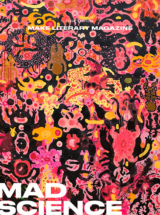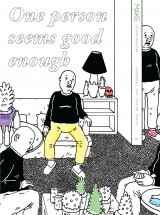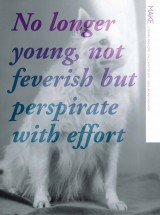
by Killian Quigley

Published by Cardboard House Press, 2022 | 140 pages
“The dream of every cell is to become more cells.” In Maricela Guerrero’s latest book, this is also true of words. Each poem in The Dream of Every Cell generates a series of poetic valences that gives life to new poems, producing a book like nature makes a tree. The analogies between writing and cellular reproduction emerge from Guerrero’s use of biological descriptions as poetic metaphors. The poems themselves seem to grow from previous ones, building a particular lexicon that becomes enriched with each poem. Aloe vera, wolves, birch and fir, anemone, subtraction, breath, nitrogen, empire: these words become more tangible as each poem gives shape to their meaning in Guerrero’s diction. The book reveals itself as organism, as a structure of interrelated cells that communicate and feed each other. And just as biological information is imprinted during the process of reproduction, the book is a space that receives poetic information.
The Dream of Every Cell is made up of a network of readings on biological and ecological topics that range from the work of Canadian biologist Suzanne Simard to a guide of the trees of Mexico City. In the poem “The Birch and the Fir?”, Guerrero uses the work of Simard to write: “As it turns out, the birch and fir converse not only in the language of carbon, but also of nitrogen and phosphorus and water and defensive signs, in allelochemicals and hormones through networks of tiny mushrooms and bacteria.” Simard’s work describes how different species of trees form communities and provide aid through underground communication networks, a prominent idea in Guerrero’s book: “[Ms. Olmedo] told us that a tree isn’t an individual, but part of a network.” In Guerrero’s telling lessons such as these from the natural world provide an ethos for the human world: “We could continue with the words and their matter made of carbon / nitrogen water phosphorus to understand: / that they were lessons in care.” The book thus oscillates between micro- and macro-organisms, drawing out lessons from ethical ecology to create an ecological ethics.
The Dream of Every Cell is the search for a language that unites the scientific and the commonplace, that brings together different registers of discourse in its lessons so as to build a community that resists the language of empire. It is, in Guerrero’s words:
Guerrero describes the language she constructs as being “made of hands and winds and nutrients,” and is as such directly opposed to “the language of naming.” Guerrero writes: “In the language of the empire, a microorganism doesn’t become a microorganism; it becomes an artifact adhered to the empire’s objectives.” While “artifact” is often associated with archaeological remains in English, it can be translated simply as a “device” or “tool” in Spanish, meaning that the planet it being reduced to utilitarian purposes. In Guerrero’s poems, the world of empire is one of extraction and subtraction (“It’s said if they come for us we won’t even realize it”) that finds resonance in the disappeared persons in Mexico, as well as disappeared species.A language that’s food and communication: a language that says battlement, then winks and bats its eyelashes at you; that clearly says we’re here, then rings us in a nimbus of sweetness and joy that joins us together in numerous ways: channels of communication that hum and bring us closer:cells, microorganisms:plant of another plant and joy.
For Guerrero, “encouragement is a round warm form of resistance,” and her resistance takes shape as lessons in care. More specifically, poetry is the form in which the examples from microorganisms can be translated into lessons of care for human ethics: “I’m looking for ways of being in other languages: making furrows / of words: I’d like to speak in tree and shelter them: / the cells that dream they’re cells.” The most illustrative example of this blend of biology and linguistics takes place in the poem “What do You Mean in a Precise Language, Anemone?”:
In biological reproduction at the human level, words appear to disassemble into phonemes, moans, and breathing to describe the most intimate form of sharing space, an inhabiting of another that escapes the appropriation of beings into artefacts.We would dream of phonemes becomingprecise and impermanent margins of space andplacidity, vast extensions of a present abuzz inthe gorgeous combustion of inhaling oxygenand exhaling carbon dioxide and other gases:an effervescence of warmth and light, scents,stutters, growls, spit, mucus, thunderous fluids,amorous moans that stammer one inhalationafter another and make way for new androunded ways of sharing space, of inhabitingyour depths and mine like water flowingthrough the mountains: clear river.
The Dream of Every Cell requires a patient translator, one who allows the poems to breathe and expand in space as the book unfolds. Robin Myers is careful not to overly determine meaning in her translation; often a more direct translation is possible, but Myers selects words that allow for the construction of a more nuanced lexicon more appropriate to the spirit of Guerrero’s writing. Every translation effectively constitutes an interpretation, yet Myers translation flows openly like a parallel river to Guerrero’s Spanish, nimbly bending between registers following Guerrero’s odyssey through cells, roots, chemical processes, and human relationships. The translation reads so naturally that one could forget it is a translation at all, if it weren’t for the original text mirrored on the opposite pages.
In an epigraph to the book, Guerrero writes: “Cell means space: / like a leaf, a page to write on.” More precisely, Guerrero uses the word “hueco”, that Myers has translated to “space”. “Hueco” could also be translated as “hole”, an empty space, that makes us think of the blank page as an emptiness waiting to receive print, inscription. In essence, each leaf of this book is connected to branches of ideas, with lessons of care running through their veins. Guerrero shows us that to embrace the teachings of nature means to embrace something profoundly human. With this bilingual edition, readers of both languages can appreciate the construction of an ecological ethos that The Dream of Every Cell poeticizes.
Alec Schumacher (Ph.D. 2017 University of Wisconsin) is an Associate Professor at Gonzaga University. His research interests include Chilean poetry, the neo-avant-garde, and translation. He has published several articles on the works of Juan Luis Martínez. He has translated works by Jorge Arbeleche, Elvira Hernández, and Luis Correa Díaz. His translation of The Chilean Flag (2019) was nominated for the National Translation Award in Poetry 2020 by ALTA (The American Literary Translators Association).















click to see who
MAKE Magazine Publisher MAKE Literary Productions Managing Editor Chamandeep Bains Assistant Managing Editor and Web Editor Kenneth Guay Fiction Editor Kamilah Foreman Nonfiction Editor Jessica Anne Poetry Editor Joel Craig Intercambio Poetry Editor Daniel Borzutzky Intercambio Prose Editor Brenda Lozano Latin American Art Portfolio Editor Alejandro Almanza Pereda Reviews Editor Mark Molloy Portfolio Art Editor Sarah Kramer Creative Director Joshua Hauth, Hauthwares Webmaster Johnathan Crawford Proofreader/Copy Editor Sarah Kramer Associate Fiction Editors LC Fiore, Jim Kourlas, Kerstin Schaars Contributing Editors Kyle Beachy, Steffi Drewes, Katie Geha, Kathleen Rooney Social Media Coordinator Jennifer De Poorter
MAKE Literary Productions, NFP Co-directors, Sarah Dodson and Joel Craig